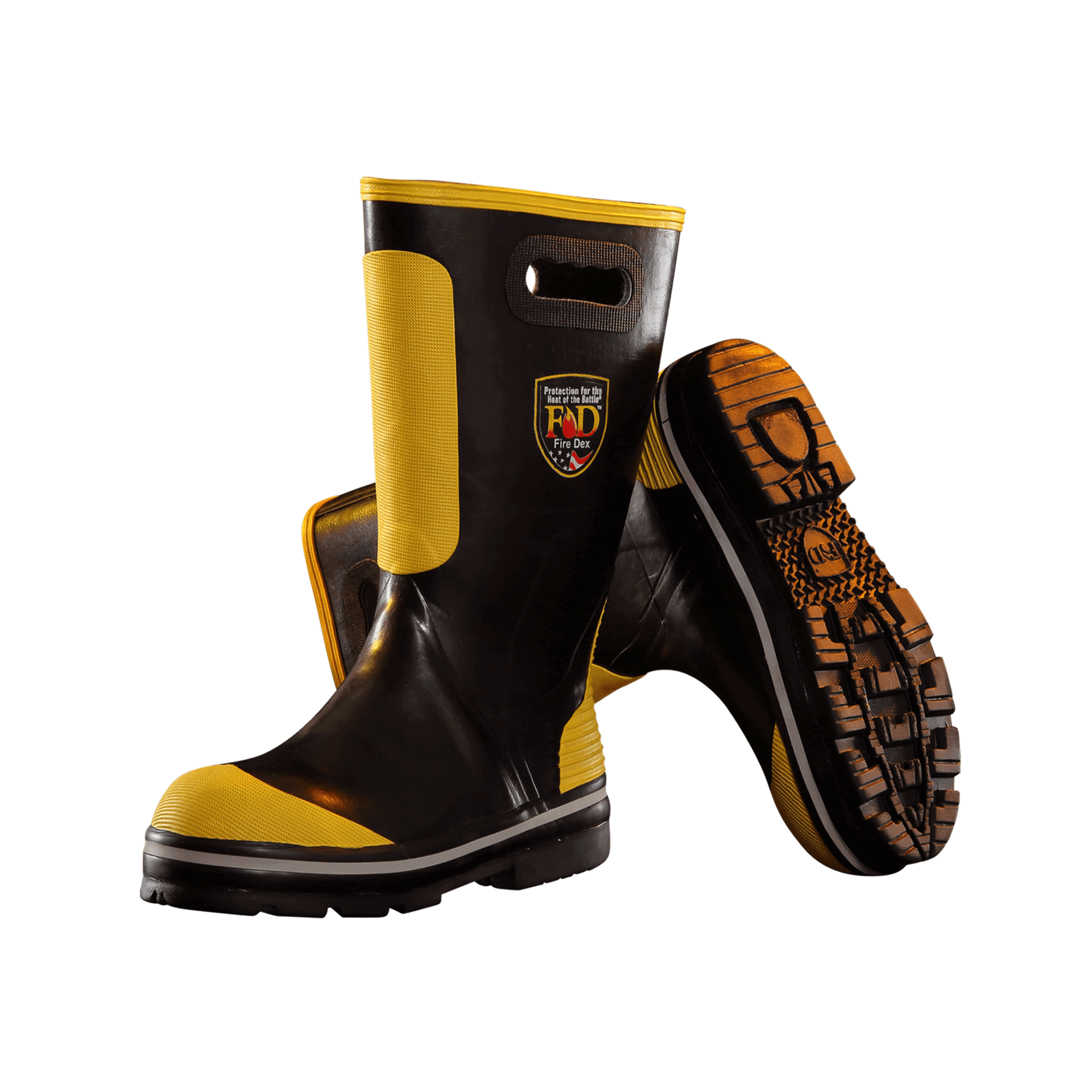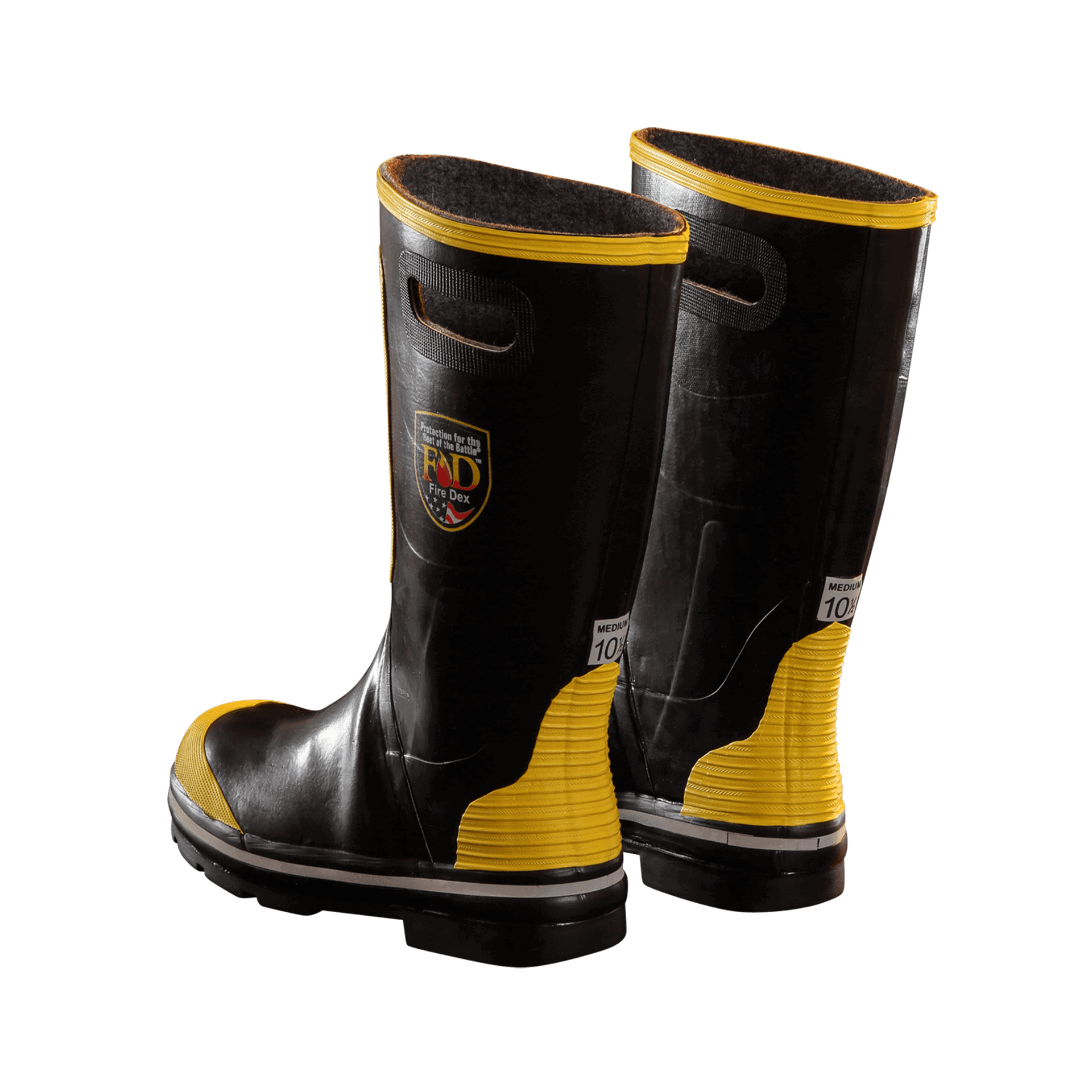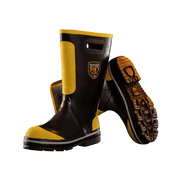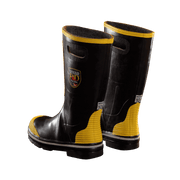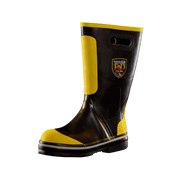Why Heel-to-Ball Is Essential
 This illustration shows two feet which are the same length, but each require different size shoes. There are different fittings for short-toed feet and long-toed feet. Proper shoe-fitting incorporates not only overall length (heel-to-toe measurement) but also arch length (heel-to-ball measurement). Shoes are designed to flex at the ball of the foot. Correct fitting properly positions the ball joint in the shoe and provides room for the toes so they are not confined.
This illustration shows two feet which are the same length, but each require different size shoes. There are different fittings for short-toed feet and long-toed feet. Proper shoe-fitting incorporates not only overall length (heel-to-toe measurement) but also arch length (heel-to-ball measurement). Shoes are designed to flex at the ball of the foot. Correct fitting properly positions the ball joint in the shoe and provides room for the toes so they are not confined.
WITHOUT UTILIZING HEEL TO BALL MEASUREMENT
 Improperly fitted shoes (shown right) can cause a variety of foot problems in addition to general discomfort and shoe breakdown. If the arch of the foot is not positioned properly in the shoe, the foot will become fatigued and uncomfortable.
Improperly fitted shoes (shown right) can cause a variety of foot problems in addition to general discomfort and shoe breakdown. If the arch of the foot is not positioned properly in the shoe, the foot will become fatigued and uncomfortable.
THE BRANNOCK FOOT-MEASURING DEVICE® ENSURES CORRECT FIT
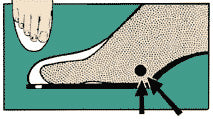 The foot to the left is correctly fitted. The arch of the shoe and ball joint of the foot meet at the same point. The foot arch is correctly positioned in the shoe. The foot and shoe bend at the same location, with the arch fully supported, allowing the toes to remain straight. There is ample space in front of the toes to allow adequate ventilation. This will ensure a correct and comfortable shoe which will keep its shape.
The foot to the left is correctly fitted. The arch of the shoe and ball joint of the foot meet at the same point. The foot arch is correctly positioned in the shoe. The foot and shoe bend at the same location, with the arch fully supported, allowing the toes to remain straight. There is ample space in front of the toes to allow adequate ventilation. This will ensure a correct and comfortable shoe which will keep its shape.
INSTRUCTIONS FOR USE
1. PREPARE THE DEVICE
Prepare the Brannock Foot-Measuring Device® as shown in the photo below. The width bar should be set to its widest position and the arch length indicator should be slid back, so the foot can be positioned easily on the device.
Note: Some devices have dual calibrations for the heel-to-toe, arch, and width measurements. Be sure to read the colored area which corresponds to the calibration you are fitting.
2. POSITION THE FOOT
 Have the customer remove their footwear and stand, placing their right heel into the right heel cup. The customer should stand with equal weight on both feet to ensure that the foot being measured has elongated and spread to its maximum size. Be sure the heel is properly located against the back of the heel cup, by grasping the customer's ankle and device together, as illustrated in photo.
Have the customer remove their footwear and stand, placing their right heel into the right heel cup. The customer should stand with equal weight on both feet to ensure that the foot being measured has elongated and spread to its maximum size. Be sure the heel is properly located against the back of the heel cup, by grasping the customer's ankle and device together, as illustrated in photo.
3. MEASURE LENGTHS
Heel-To-Toe Length
 Press the toes flat against the base of the device and look straight down over the longest toe (not necessarily the first toe) to read toe length. Make sure the customer's socks are snug against the toes (without drawing the toes back) to yield an accurate measurement.
Press the toes flat against the base of the device and look straight down over the longest toe (not necessarily the first toe) to read toe length. Make sure the customer's socks are snug against the toes (without drawing the toes back) to yield an accurate measurement.
Arch Length (Heel-to-Ball)

 Place your thumb on the ball joint of the foot (as shown in the photo to the right). Slide the pointer (A on diagram) forward so the inside curve of the pointer fits the ball joint of the foot and the two high ribs come in contact with your thumb. When the pointer is properly located, the lower middle rib will be against the ball joint on the side of the foot (B on diagram). This yields the arch measurement. The arch length represented in the diagram is 8 1/2.
Place your thumb on the ball joint of the foot (as shown in the photo to the right). Slide the pointer (A on diagram) forward so the inside curve of the pointer fits the ball joint of the foot and the two high ribs come in contact with your thumb. When the pointer is properly located, the lower middle rib will be against the ball joint on the side of the foot (B on diagram). This yields the arch measurement. The arch length represented in the diagram is 8 1/2.
4. FIND THE CORRECT SHOE SIZE
Compare the arch length to the heel-to-toe length. Generally you'll use the larger of the two measurements as the correct shoe size. If the arch length and heel-to-toe length are the same, this will be the shoe size. If the heel-to-toe length is larger than the arch length, then fit to the heel-to-toe size. If arch length is larger than heel-to-toe, then fit to arch length.
EXAMPLE:
| Heel-to-Toe Measurement |
Arch Measurement | Shoe Size |
| 8 | 8 | 8 |
| 8 | 8 1/2 | 8 1/2 |
| 8 1/2 | 8 | 8 1/2 |
It is important that both measurements be taken and compared to find the proper shoe size. Simply using the heel-to-toe length may result in an improper fit.
5. MEASURE THE WIDTH

 Slide the width bar firmly to the edge of the foot. Locate the shoe size (as determined in step four) on the movable width bar and view the width measurement indicated by the properly determined shoe size. If the shoe size falls between widths, choose a wider width for a thick foot, a narrower width for a thin foot.
Slide the width bar firmly to the edge of the foot. Locate the shoe size (as determined in step four) on the movable width bar and view the width measurement indicated by the properly determined shoe size. If the shoe size falls between widths, choose a wider width for a thick foot, a narrower width for a thin foot.
6. MEASURE THE OTHER FOOT
Reverse the device end-for-end and measure the other foot following the steps described above. Be sure to measure both feet, then fit the larger foot. It is common to have feet of different sizes.
7. REMEMBER THE FITTING PROCESS
When used properly, the Genuine Brannock Foot-Measuring Device® is designed to indicate the correct shoe size. This is the first step in the fitting process. Due to differences in manufacturing, styling, and other variables, it is up to each fitter to be knowledgeable of shoe styles and fit characteristics. It may be necessary to make compensation in sizing to achieve a proper fit for each individual customer. The fitting process often involves trial fittings to ensure that the proper size was selected.
JUNIOR MODEL
 The Genuine Brannock Junior Model, shown here, is designed exclusively for children. Children's feet are constantly growing. With this in mind, the Junior Model device ensures that the shoe will fit, while allowing approximately one size for growth.
The Genuine Brannock Junior Model, shown here, is designed exclusively for children. Children's feet are constantly growing. With this in mind, the Junior Model device ensures that the shoe will fit, while allowing approximately one size for growth.
The method of measurement is the same as the adult model with the exception of finding the width. Instead of utilizing a width t-bar, the Junior device uses a slide to measure the width. Position the slide so the arrows point to the size determined from toe or arch length. Then, find the width line which aligns to the widest part of the foot.
HOW TO MEASURE INFANTS
 When measuring infants, place the ball indicator to the end of the slot. Hold the heel firmly against heel cup, and rest the inner edge of the foot against the indicator. Press the toes against the device with your thumb and read the toe length. To measure the width, use the diagonal width line which comes in contact with the foot at the widest part.
When measuring infants, place the ball indicator to the end of the slot. Hold the heel firmly against heel cup, and rest the inner edge of the foot against the indicator. Press the toes against the device with your thumb and read the toe length. To measure the width, use the diagonal width line which comes in contact with the foot at the widest part.
Cleaning the Device
Clean the Brannock Device with a damp cloth. Use liquid dishwashing detergent if necessary. Do not use spray cleaners or disinfecting solutions as they may adversely affect the measuring areas of the device.
Fitting Tips
- Terms such as narrow, wide, regular, extra wide (and others) may be used by manufacturers to indicate a width size. These terms are not standardized. Footwear manufacturers can use these terms at their discretion so it is difficult to determine how the Brannock width measurement you measure relates to a manufacturers specification. Contact the footwear retailer or manufacture to get specific recommendation on their width sizing.
- Shop at stores that provide service to their customers and have knowledgeable sales people. Getting properly fitted footwear takes more than picking a shoe off the shelf and having the sales associate ring up your sale.
- Be sure to have both feet measured. Many people have feet of different sizes. Fit to the larger of the two. Have your feet measured and fitted each time you purchase shoes. Your foot size changes with age, weight changes, and other factors. The shoe size you wore in high school probably is not the right size.
- Have footwear fitted at a similar time as when you will be wearing the footwear. For daily footwear go when you've been on your feet all day your feet have expanded.
- Shoes don't stretch. If they don't feel right at the time of purchase they probably will never feel right.
- Correctly fitted footwear can prevent long term foot problems.
- Take time to fully lace and tie the shoe properly and walk around in the shoe at the time of try on.

